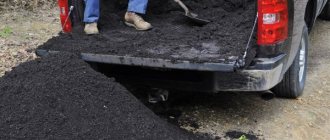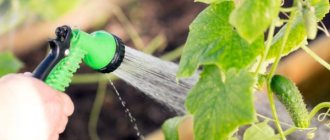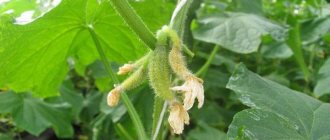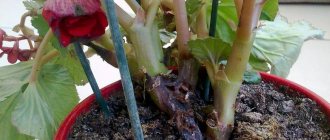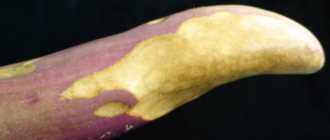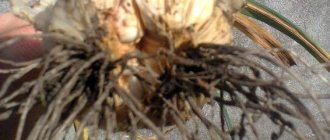Reasons for soil color change ↑
This nuisance in itself does not pose any threat to plants growing in the greenhouse. But the reasons that caused it can cause significant damage to the future harvest and to the seedlings themselves. Therefore, as soon as green soil has been discovered, it is necessary to identify the cause and begin an intensive fight against it. There are four main reasons for the appearance of green soil: waterlogging, insufficient ventilation, excessive soil fertilization and increased soil acidity. Sometimes they can be combined with each other, and then there will be not one, but two or three, or even four so-called root causes.
As soon as such soil is discovered, action must be taken immediately
The green color is acquired by the soil due to the germination of either moss or algae in it. Both the first and second feel great where there is excess moisture. The difference is that moss prefers places with poor lighting, while algae loves bright and (especially!) natural light. It has been noticed that they do not reproduce as actively and grow under lamps. In addition, moss grows much more actively in places with acidic soil.
Let's take a closer look at the “enemy”: is it moss or algae?
Green soil can appear in a greenhouse for several reasons:
- Increased soil acidity.
- Poor ventilation.
- Waterlogging of the soil.
- Excess fertilizer.
Mosses and algae are plants that love a moist environment. Both too much watering and nearby groundwater under the beds can lead to their proliferation. So, if there is not enough light in the greenhouse, then moss will begin to grow with high humidity. And if it’s light, then there’s algae.
Therefore, here is what you need to do first if the soil in your greenhouse suddenly turns green:
- Step 1. Completely stop watering the plants.
- Step 2. Let's take a closer look at what exactly grew in the beds and gives the green color.
- Step 3. If it turns out that it is moss, we direct additional lighting or sunlight onto it using a large mirror, and open the windows.
- Step 4. If the culprits of the green color of the beds are algae, protect such beds from the sun as much as possible, and cover them with a layer of sawdust or sand on top. We ventilate the greenhouse well.
These are the first steps. What else needs to be done - read on.
First actions ↑
So, you found moss in the beds and the question arose how to get rid of it. Once green soil is detected, the following actions should be taken.
- Significantly reduce watering or even stop it completely for a while.
- Determine what exactly makes the ground green: moss or algae. If it is moss, then it is necessary to increase the access of light to the room, since they love darkness. If it is algae, then it is necessary to block their access to light. To do this, sprinkle the ground with a layer of sand on top. In both cases, it is advisable to remove the contaminated layer.
- Increase ventilation.
- If these procedures do not help, move on to the “heavy artillery”.
It is strictly prohibited to use copper sulfate to destroy “greenery” on the soil.
Important! Under no circumstances should copper sulfate be used to destroy them after green soil has been identified due to moss or algae. It not only successfully deals with these unwanted guests, but also with beneficial microbes and microorganisms that help seedlings grow. After treating it, the land will become unsuitable for growing anything and will have to be completely replaced.
Mulching the soil ↑
The use of mulching helps to avoid excessive moisture. This method allows you to maintain the most favorable temperature around the plant; mulch prevents heat from evaporating too quickly and sharply from the soil. Since moisture also lingers longer, more frequent and abundant watering becomes irrelevant. That is why covering plants with synthetic or organic materials provides good prevention against the appearance of moss or algae in the ground.
Mulching should be done in late spring or early summer. Carrying it out earlier risks the fact that the covering material on the ground that has not warmed up will simply begin to rot. Although, if the greenhouse is heated artificially, and you are sure that the soil is at the optimal temperature, then this procedure can be carried out earlier than expected.
Try not to use synthetic mulch, as organic mulch is much healthier.
You cannot pour mulch close to the trunk of the plant; for better air circulation, you need to leave free space between them. Before you start laying out the mulch, you need to moisten the soil and walk through it thoroughly with a hoe or chopper. After processing with a hoe, you need to take a pitchfork and use it to make many holes in the ground. This will help make the soil more airy and plump; air will pass through it more easily; in addition, loosening will prevent the formation of a hard crust on the surface of the soil, which does not allow air or water to pass through.
Since mulching is carried out in a greenhouse, there is no need to worry about mice or slugs infesting the organic version. It is better to choose this one, because organic mulch does not need to be removed for the winter. On the contrary, leave it. Gradually rotting, it will play the role of natural fertilizer for plants.
Reducing soil acidity ↑
To determine the acidity level, of course, it is better to buy a special electronic meter or take a soil sample for chemical analysis. If none of these options are available, you can use old and proven methods that will show approximate results.
- Determining acidity
To carry out this method of analysis, the following components are needed: a plastic half-liter bottle, crushed chalk, a rubber fingertip, a sheet of newspaper. Take a bottle and pour about 5 tbsp into it. l. plain water. The water should be neither hot nor cold. Next, pour 2 tbsp into a bottle of water. l. soil you want to test. Wrap crushed chalk in the amount of one teaspoon in a small piece of paper, and then put this package in a bottle with water and soil. Squeeze the fingertip and place it on the neck. Wrap a sheet of newspaper around the bottle and start shaking it. After five minutes of shaking, look at the fingertip: it has completely filled with air and has become smooth - the soil is acidic, it has not straightened out completely - it is slightly acidic, it has not straightened out at all - the soil is of normal acidity.
Ash can be successfully replaced with dolomite flour
The second method is much easier and all you need is five heels of blackcurrant leaves or, in extreme cases, bird cherry. Place these leaves in a glass, pour boiling water over them and leave to steep. After the broth has cooled, we lower the soil into it to check. The broth should change color: acquiring a bluish tint indicates a neutral level of acidity, a greenish tint indicates slightly acidic soil, and red indicates increased acidity.
- We are taking measures to reduce it
On very acidic soil, spread quicklime or chalk. Ash is suitable only for slightly acidic soil, and then in small quantities. Trying to reduce high acidity levels with ash is fraught with consequences. The fact is that in this case a lot of it will be needed, which will significantly change the structure of the soil. In addition, it contains not only potassium, but also other elements (magnesium, phosphorus and others), and their excessive amount will lead to “overfertilization”.
Replacing topsoil ↑
This is a radical decision, which is quite troublesome and can lead to the loss of young crops when they are still too small for temporary transplantation. It’s worth starting if no other methods have helped.
It is necessary to cultivate the land with quicklime. It should be extinguished only after it has been lying on the ground for some time.
First, it is necessary to remove the top layer of soil; its thickness should be at least 30 cm. After this, the cleaned area is treated with lime. After about a day, the lime is slaked, and everything on top is thoroughly whitened. After whitewashing, several days must pass before new soil is brought in and laid out. Let the soil dry well and only then can you put clean and uncontaminated soil on top.
Crop rotation ↑
As is already known, excessive fertilizer can cause the earth to turn green. Therefore, you need to be very careful with feeding. But what to do when those crops are grown that simply need to receive a high amount of nutrients? In this case, crop rotation will help. It is aimed at the correct and uniform use of land resources.
To ensure that the greenhouse does not remain idle for a whole year, you can perform crop rotation across the beds. There are cucumbers in one bed, tomatoes in the second, peppers in the third, and the fourth is empty. And then every year you change their places
There are three groups of crops, which are divided according to the level of nutrients they require. The first group includes those that need a large amount of fertilizer, the second group includes those that need an average amount, and the third group includes those that need a minimal amount. Over the course of three years, representatives of these groups are planted on the site alternately, starting with the first and ending with the third. After this, a one-year break is taken with increased soil fertilization. By adhering to this rule, you can forget about such a need as periodic replacement of soil. This is due to the fact that proper crop rotation helps prevent the depletion of mineral and other nutrient reserves in the soil. In addition, fertilizer costs are significantly reduced.
Of course, it is quite difficult to deal with green soil; it is much easier to simply prevent this from happening. By adhering to the above rules, you can avoid the appearance of moss or algae in the greenhouse.
Ambulance
If you find that the soil in the greenhouse is turning green, you need to immediately perform a number of actions.
- Reduce watering for a while, and in the case of a large area of green soil, stop it completely.
- Determine why the soil in the greenhouse turned green: due to the active proliferation of algae or mosses. If the soil is inhabited by moss, it is necessary to create maximum conditions for the penetration of sunlight, since mosses do not like it very much. If algae have settled in a greenhouse or greenhouse, it is important to block the access of light to them. For this purpose, you can sprinkle them on top with a layer of vermiculite, sand or sawdust. If the soil is damaged by both algae and mosses, it is advisable to remove the top layer of soil and remove it from the site.
- Good ventilation of the greenhouse or greenhouse is necessary.
In the event that all of the above actions do not give the desired result, you will have to use chemical and biological agents to combat it.
Copper sulfate
Advice: experienced gardeners warn that having established the reason why the soil in a greenhouse or hothouse turns green, under no circumstances should you fight mosses or algae with copper sulfate.
This chemical compound is dangerous because it will destroy not only the “aggressors” and the cause of greening of the soil, but also beneficial microorganisms. After such treatment, the soil will not be suitable for growing any plants; it will have to be completely changed.
Consequences of soil greening
Algae and mosses compete with cultivated plants, removing nutrients from the soil. They absorb phosphorus especially actively, so an excess of phosphorus-containing fertilizers during feeding can stimulate their rapid reproduction. They can also parasitize other vegetation.
Soil covered with a green coating and elements of buildings or decor do not look aesthetically pleasing. Greening of the soil in the beds is a signal of poor soil care or increased acidity, all of which together have a negative impact on the crops grown by humans.
Important! In order not to harm the soil and plant crops, you should strictly follow the instructions for dosing copper sulfate. This substance should not be more than 1 g per 1 m².
The soil in the greenhouse has turned green: what to do?
If you liked the material, tell your friends:
To make the fight against moss and algae effective, you need to familiarize yourself with the main methods of destroying greenery in the soil. One of the most drastic ways is to replace the top layer of soil. This is a radical method, but it is guaranteed to get rid of greenery in the soil.
After removing the top layer of soil, the bottom layer is treated with lime. After this, they wait a day and treat the soil with water. The slaked soil is covered with whitewash. After the soil has dried, you can add a new top layer of soil.
Many gardeners prefer to combat frequent greening of the soil using traditional methods.
Before you start changing the acidity of the soil, it is important to find out its level. To do this, use an agrochemical laboratory, litmus paper or a soil meter. There is also an Alyamovsky device - an effective way to determine the level of acidity.
Various methods are used to correct soil acidity. They should be chosen based on capabilities and personal preferences. To deoxidize the soil, fluff, lime flour, lake lime, and chalk are most often used.
Plants to reduce acidity:
- Oats;
- Rye;
- Phacelia;
- Vika;
- Lupine.
To increase efficiency, you can use several methods simultaneously. You can dilute the soil with dolomite flour, mullein and cover with sawdust. Before you start mulching, you can water the soil with a solution containing microorganisms.
Tags: go green, polycarbonate, why, greenhouse
About the author: admin4ik
« Previous entry
Is the greenhouse soil covered with moss?
So, you have determined that the soil in the greenhouse has turned green due to moss. Let's say that moss is a fairly peaceful plant, and it is often specially grown. But moss is included in the classification of weeds for a reason - it will still have a negative impact on the harvest. If there is not much moss yet, just scrape it off and throw away the removed layers.
Reason #1. Ideal conditions created
Let's first check if the conditions for the appearance of moss are created in your greenhouse:
- Step 1. Take some earth in your hand and look at it. If it crumbles reluctantly, it means it is still waterlogged. In this case, simply add sand to the soil and aerate it, and where there is the most moss, make additional depressions and fill them with river sand.
- Step 2: Now test the soil for pH value. If it is acidified, then moss will grow on it with a brown bottom and a green top. Is this the case? Restore the acid balance with dolomite flour, and apply fertilizer in the spring, because... Moss grows precisely on acidified and poor soil.
- Step 3. Check to see if moss has appeared in places where you always have shade in your greenhouse? Perhaps something is shading it - a support or a tree nearby? Then place reflective foil nearby, which will illuminate this area - just as they do in a thermos greenhouse. A simple and effective solution.
Reason #2. The soil is too acidic
If you determine that it is moss, then the soil is still acidic. And if the moss is not touched for several days (for example, you go to the country only on weekends), then it will spread as quickly as possible. Plants will begin to lag behind in growth, because the moss will take over all the valuable substances that it finds in the soil. Therefore, act immediately, especially since this is a solvable problem. Just follow these instructions:
- Step 1. First, add the ash, scattered, and do not dig it up.
- Step 2. Right now, sow annual green manures - mustard, rapeseed or oilseed radish. Within a month, the soil will be covered with a continuous carpet of greenery.
- Step 3. Plant your seedlings directly onto this carpet.
- Step 4. As soon as it takes root, mow the green manure and leave it directly on the beds as mulch.
- Step 5. After harvesting, sow green manure again, already winter, and let it remain there, even under the snow.
But let’s first figure out how often you need to apply lime fertilizers to greenhouse soil:
- In normal, rich soil - once every 4-5 years.
- In light soil - every 3-4 years.
- In severe cases - after 5-6 years.
When applying, keep in mind that the finer the limestone you grind, the stronger its effect will be.
In one year, your greenhouse soil will be completely healed. But remember that moss often grows where the soil layer is too dense and there is a lack of nutrients. What to do? Soil aeration. Try to make holes about 10 cm deep, every 10-15 cm.
Reason #3. Moss “crept” from the frame
And finally, moss is a rather picky plant, and therefore it feels great on both stones and trees. Therefore, if its elements have already appeared in your greenhouse, carefully examine the wooden structures - are they the first to turn green? Moss can be removed using iron sulfate if it is a tree, and with a soda solution if it is a stone. Get rid of this cause of greening of the ground immediately, before the plant begins to spread in the ground.
The rapid growth of mosses is also provoked by phosphorus fertilizers, which are sometimes applied too much. And sometimes moss appears on beds that were previously treated with a herbicide such as Roundup. In this case, no additional treatment is needed - just dig up the ground and the problem will be solved.
Greens on the ground in a greenhouse: how to help
Sometimes, to save plants, you need to act without delay. If green soil was found in a closed area, it means that mosses or algae have settled in the ground. Do not think that these organisms are harmless to plants.
The first and most important reason for the growth of moss and algae can be considered excessive watering. If the soil turns green, watering should be reduced or stopped altogether. It is important to immediately determine what has settled in the soil. Based on this, the following measures can be taken.
If the greenhouse is not properly maintained in winter, there is a risk of algae and moss growing on the ground.
How to help the soil:
- Stop watering.
- If mosses have settled in the soil, it is necessary to let as much sunlight into the greenhouse as possible.
- In the case of algae, you need to act in the opposite way - take away sunlight from them, shade them.
- The greenhouse should be ventilated frequently and very well.
It is important to note that you cannot fight organisms using a solution of copper sulfate. The solution is capable of destroying mosses and algae. And along with them, all the beneficial microorganisms living in the soil. In this case, the soil will become “dead” and will need to be replaced.
Acidic soil
An important indicator characterizing the ratio of acids and minerals is soil pH. Its value in a greenhouse does not remain unchanged; it depends on what fertilizers are used, what water is used for irrigation - hard or soft, and the plants themselves, taking minerals, change the acidity level.
You can determine whether the soil in a greenhouse is acidic or not without the use of special instruments. You need to take a lump of earth, put it on a plate or bag, and pour a few drops of table vinegar on it.
If bubbles and hissing appear, it means the soil is neutral. The lack of reaction indicates that the soil is acidic, and this promotes the growth of moss.
For deoxidation, there are several simple methods based on the use of alkali. You can add substances such as lime, dolomite flour or gypsum. If the soil in the beds has not been changed for a long time, you can renew the soil, add fresh black soil, and before that treat it with quicklime.
- Author: Inna Kiseleva
Rate this article:
- 5
- 4
- 3
- 2
- 1
(0 votes, average: 0 out of 5)
Share with your friends!
